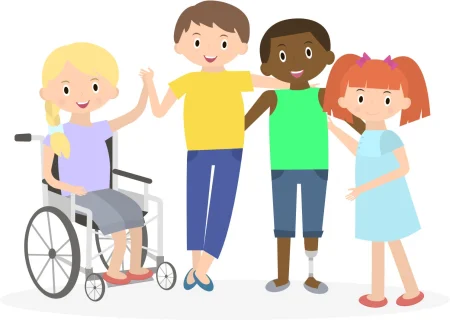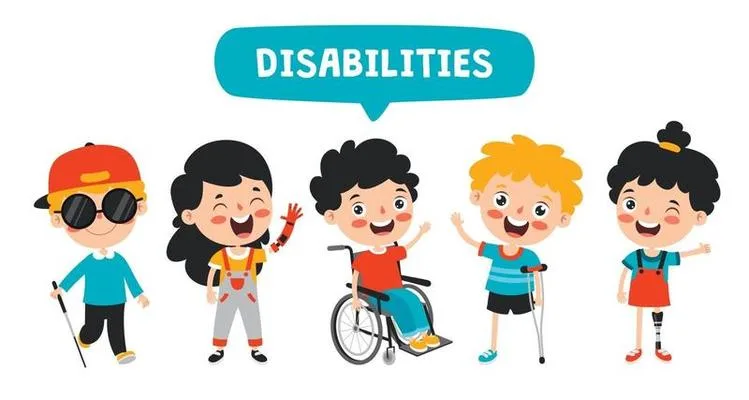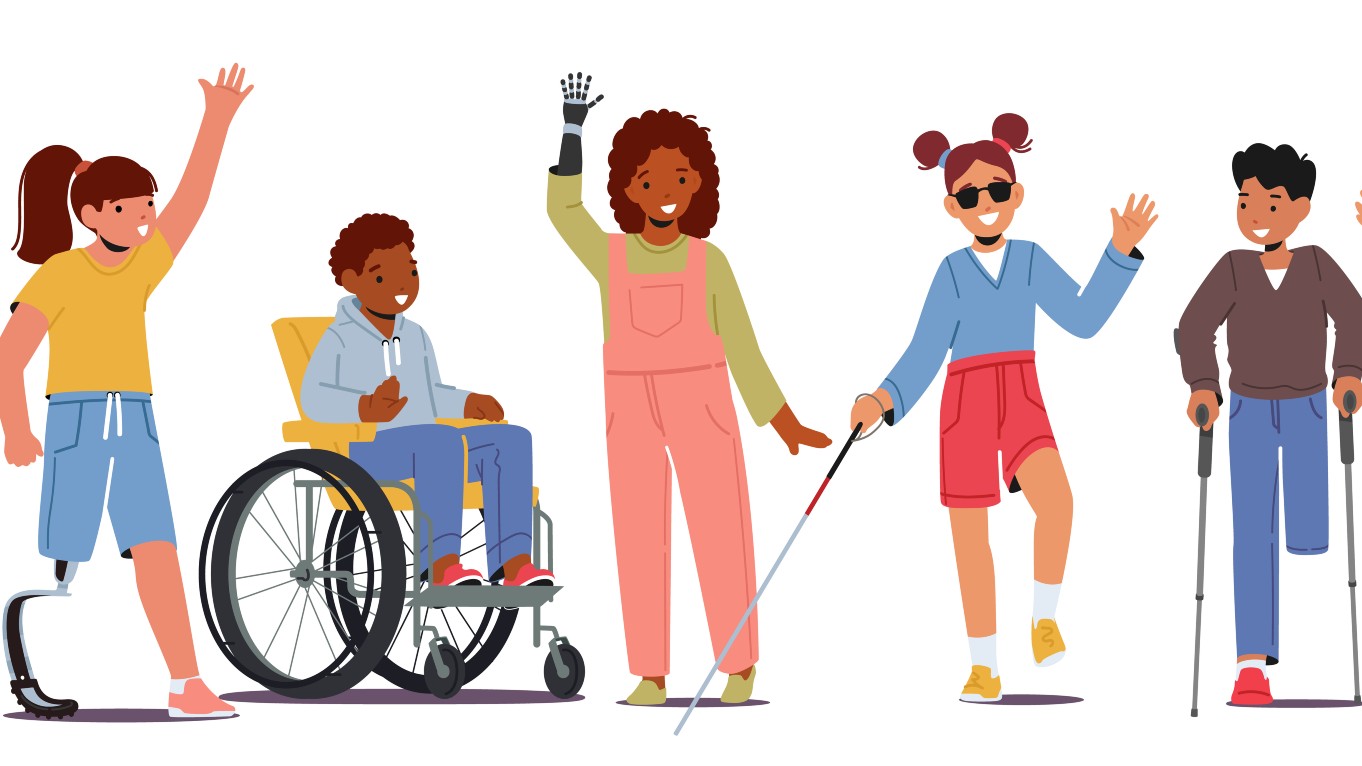Understanding the 21 types of disabilities is crucial for creating awareness and promoting inclusion in society. Disabilities can affect various aspects of a person’s development—ranging from physical, sensory, intellectual, learning, and speech disabilities to neurological and mental health conditions. Each type has its own set of challenges that may impact communication, mobility, cognition, or behavior. Recognizing these differences helps parents, educators, and healthcare professionals provide better care and support.
Early identification and intervention are the most powerful tools in managing disabilities effectively. When disabilities are detected at an early stage, children can benefit from personalized therapy programs, which help in improving functional skills and overall development. At Nurturers, we focus on the importance of early intervention, ensuring that every child receives timely assessment, therapy, and guidance. With proper care, awareness, and consistent support, children with disabilities can lead fulfilling and independent lives, breaking barriers and realizing their true potential.
What Is a Disability?
A disability is any physical, cognitive, mental, or emotional condition that limits a person’s ability to perform certain activities or participate fully in society. Disabilities can be:
- Congenital – Present at birth, such as Down syndrome or cerebral palsy.
- Acquired – Developed later in life due to illness, injury, or environmental factors.
According to the World Health Organization (WHO), over 1 billion people globally live with some form of disability, making it essential to identify challenges early. Many parents often ask, how many types of disability exist? Experts recognize 21 types, each requiring specific interventions.

Why Understanding the Types of Disabilities Matters?
Knowing the types of disability is not only important for diagnosis but also for developing individualized education plans (IEPs), therapy schedules, and support systems. Awareness helps:
- Identify early signs of developmental delays.
- Ensure timely therapy and support.
- Enhance social and academic inclusion.
- Empower children to reach their full potential.
Early intervention is often the key to unlocking a child’s abilities and promoting independence.
What Are the 21 Types of Disabilities?
Here’s a detailed look at the 21 types of disabilities, their characteristics, and interventions:
- Visual Impairment – Ranges from partial vision loss to complete blindness. Children may benefit from braille education, magnification tools, or orientation training.
- Hearing Impairment – Partial or complete hearing loss. Hearing aids, cochlear implants, and auditory-verbal therapy are effective interventions.
- Speech and Language Disability – Difficulties in articulation, comprehension, or expressive language (types of speech disability). Early speech therapy improves communication and social skills.
- Intellectual Disability – Limitations in cognitive abilities and adaptive behavior (types of intellectual disability include mild, moderate, severe, and profound). Early education and life skills training are essential.
- Learning Disabilities – Challenges in reading, writing, or mathematics (types of learning disabilities include dyslexia, dyscalculia, and dysgraphia). Early tutoring and assistive technology can improve academic success.
- Autism Spectrum Disorder (ASD) – Affects social interaction, communication, and repetitive behaviors. Early behavioral therapy, social skills training, and sensory integration therapy can enhance development.
- Cerebral Palsy (CP) – A group of neurological disorders affecting movement and posture. Physical therapy, occupational therapy, and assistive devices improve mobility and independence.
- Multiple Disabilities – Coexistence of two or more disabilities requiring multidisciplinary interventions.
- Mental Illness – Includes conditions like depression, anxiety, and schizophrenia affecting emotions, thought processes, and social interactions. Early counseling and therapy are vital.
- Neurological Disorders – Conditions like epilepsy, muscular dystrophy, or Parkinson’s disease. Medication management and rehabilitation therapy help maintain daily functioning.
- Physical Disability – Impairments affecting mobility, balance, or strength. Rehabilitation and adaptive devices enhance participation.
- Deafblindness – Combined vision and hearing impairment. Specialized communication methods like tactile signing are crucial.
- Emotional Disturbance – Challenges with emotional regulation, often impacting learning and social behavior. Early therapy reduces behavioral issues.
- Attention Deficit Hyperactivity Disorder (ADHD) – Characterized by hyperactivity, impulsivity, and inattention. Behavioral therapy, parent training, and educational accommodations improve outcomes.
- Down Syndrome – Genetic disorder causing developmental and intellectual delays. Early speech, occupational, and physical therapy promote cognitive and social development.
- Learning Disorders – Difficulty acquiring knowledge in academic areas. Early intervention prevents frustration and enhances skill acquisition.
- Chronic Illness – Long-term conditions like diabetes, cystic fibrosis, or kidney disorders. Effective management requires medical care and lifestyle adaptations.
- Specific Language Impairment (SLI) – Difficulty understanding or producing language, needing individualized speech therapy.
- Orthopedic Disability – Conditions affecting bones, muscles, or joints. Physiotherapy and adaptive devices improve mobility and function.
- Traumatic Brain Injury (TBI) – Brain damage due to accidents or injuries. Early rehabilitation aids recovery of cognitive and motor functions.
- Developmental Delay – Slower progress in motor, social, or cognitive skills. Early stimulation programs and therapy significantly improve outcomes.
For parents and educators, a 21 types of disability PDF can serve as a helpful reference for understanding these conditions and planning interventions.

Types of Learning and Intellectual Disabilities
Among the 21 types, types of learning disabilities and types of intellectual disability are especially important for early intervention:
- Types of Learning Disabilities:
- Dyslexia – Difficulty with reading and spelling.
- Dyscalculia – Difficulty understanding numbers and math concepts.
- Dysgraphia – Difficulty with handwriting and written expression.
- Non-verbal Learning Disorders – Difficulty understanding non-verbal cues and spatial relationships.
- Types of Intellectual Disability:
- Mild – Can learn academic skills up to 6th-grade level with support.
- Moderate – May achieve self-care skills and basic academics.
- Severe – Requires supervision for daily activities.
- Profound – Needs extensive support for all aspects of life.
Early therapy and individualized education plans (IEPs) help children gain essential skills and improve independence.
Types of Speech Disabilities
Effective communication is critical for social interaction, and types of speech disability can impact confidence and learning. These include:
- Stuttering – Interruptions in speech flow.
- Articulation Disorders – Difficulty producing certain sounds.
- Language Processing Disorders – Trouble understanding or using language.
- Voice Disorders – Abnormal pitch, volume, or quality of voice.
Speech therapy and parent-led communication exercises can significantly improve speech clarity and social participation.
Importance of Early Intervention
Early intervention is the cornerstone of effective disability management. Research shows that children who receive timely support have better long-term outcomes. Benefits include:
- Enhanced Cognitive Development: Therapy supports learning and problem-solving skills.
- Improved Academic Achievement: Early support reduces learning gaps.
- Better Social Skills: Children learn to interact, express emotions, and build relationships.
- Increased Independence: Life skills and adaptive strategies empower children to handle daily tasks.
- Reduced Behavioral Challenges: Structured therapy programs help manage emotional and behavioral issues.
At Nurturers, we offer therapy programs tailored to each child, including occupational therapy, speech therapy, behavioral therapy, and play therapy. Our holistic approach ensures every child receives personalized support to reach their full potential.
Practical Tips for Parents and Caregivers
- Observe developmental milestones regularly to identify early signs of delay.
- Consult specialists if you notice speech, learning, or behavioral difficulties.
- Use therapy-based interventions like speech exercises, occupational therapy, or behavioral training at home.
- Encourage social interaction and play-based learning.
- Maintain a positive and patient environment to foster confidence and resilience.
- Download resources like the 21 types of disability PDF to stay informed.
Conclusion
Understanding what are the 21 types of disabilities is essential for creating inclusive environments where children can thrive. Recognizing types of disability, types of learning disabilities, types of intellectual disability, and types of speech disability ensures timely intervention, improved development, and a brighter future.
Early detection, combined with therapy and parental support, can make a lifelong difference. Start your journey toward early intervention today and help children reach their fullest potential.

